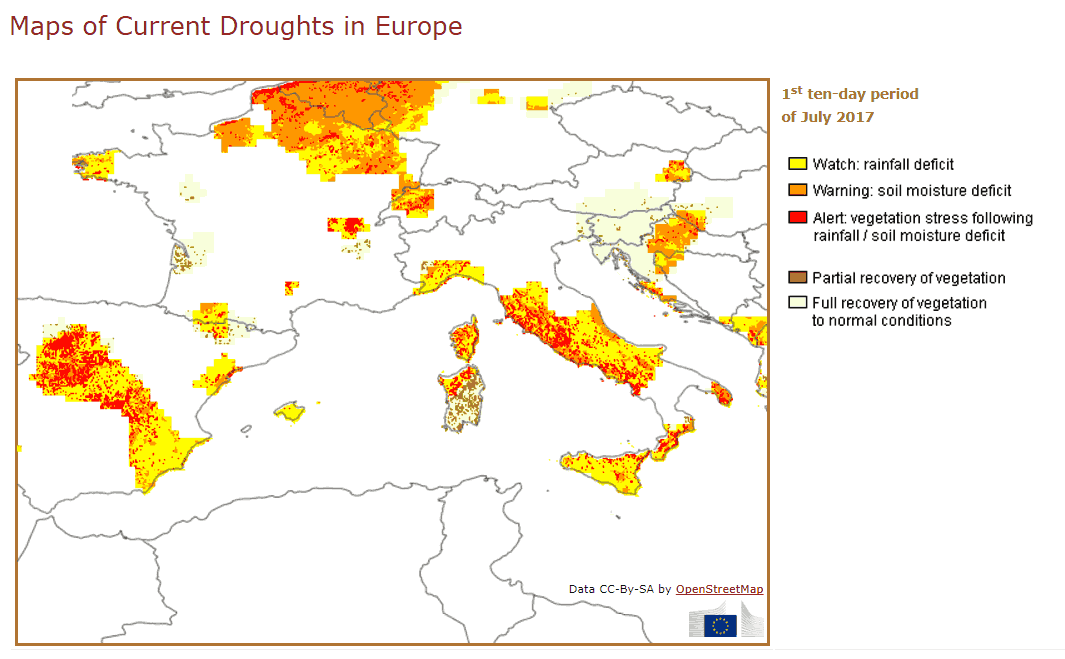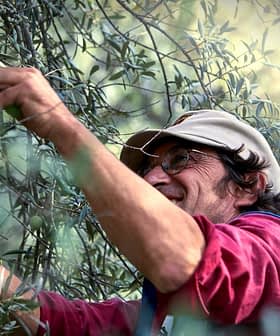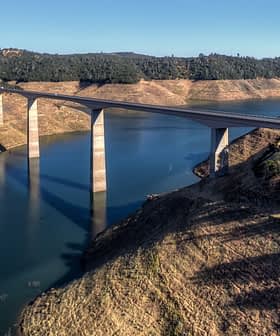Droughts Threaten Olive Crops in Southern Europe
Farmers in Europe are concerned as continuing drought conditions and high temperatures throughout southern Europe are threatening crops like wheat, olives and almonds.
Hot and dry weather, heat waves and forest fires in several countries across Southern Europe have created drought conditions that are threatening crops like wheat, olives and almonds.
The region has been experiencing below average rainfall for most of 2017 which, coupled with high summer temperatures, has contributed to what the media are calling the worst drought in decades.
If we want to sustain our quality agriculture, we need to reorganize ourselves to collect rainwater when it falls.
Cereal production in Italy and Spain is particularly affected and has fallen to the lowest level in 20 years. Olive producers in both countries are nervous about the upcoming crop after suffering a bad harvest last year due to harsh weather and pests.
Coldiretti, Italy’s farmers’ union, has estimated that two-thirds of Italy’s agriculture are affected, representing up to €2 billion in damages to the sector. La Stampa newspaper reports that the southern region of Calabria is worst hit, with an estimated loss of €310 million for olive growers who are expecting a 35- to 40 percent decrease in production.
Meanwhile, losses of €200 million have been registered in the wheat crop in Campania and Tuscany, and provinces in the Piemonte region are seeing a 30 percent decline in their wheat production. In the agricultural provinces of Parma and Piacenza, the government has declared a state of emergency which should offer some financial relief to farmers there.

European Drought Observatory
Coldiretti’s president, Roberto Moncalvo, told La Stampa that “a new culture of prevention” is urgently needed: “If we want to sustain our quality agriculture, we need to reorganize ourselves to collect rainwater when it falls,” he told the newspaper. “We can no longer permit ourselves to lose 9 out of 10 liters of rainfall.”
In Spain, farmers are telling the media that this is the most catastrophic drought they have experienced since 1992. In the regions of Castile and Leon where cereals represent the biggest crops, losses are estimated at around 60 to 70 percent. The grape and olive harvests are also under threat as high temperatures and dry weather are forecast for the weeks to come.
Drought conditions have also been observed in many parts of France, Belgium and parts of Northern Europe.
A map released by the European Drought Observatory revealed vegetation stress due to a rainfall deficit in regions in all southern European countries as well as parts of France, Belgium, Germany, Switzerland, Sweden, Finland, Ukraine and Belarus for the first ten days in July.
A June 2017 report by ISCIENCES had warned that much of Europe will suffer a water deficit through 2017.
In addition to the heat waves that have affected southern Europe over recent weeks, forest fires sparked by the dry and hot weather have ravaged the Italian regions of Campania, Calabria, Puglia and Tuscany, and parts of Spain, Portugal and Croatia, adding to the devastation.









